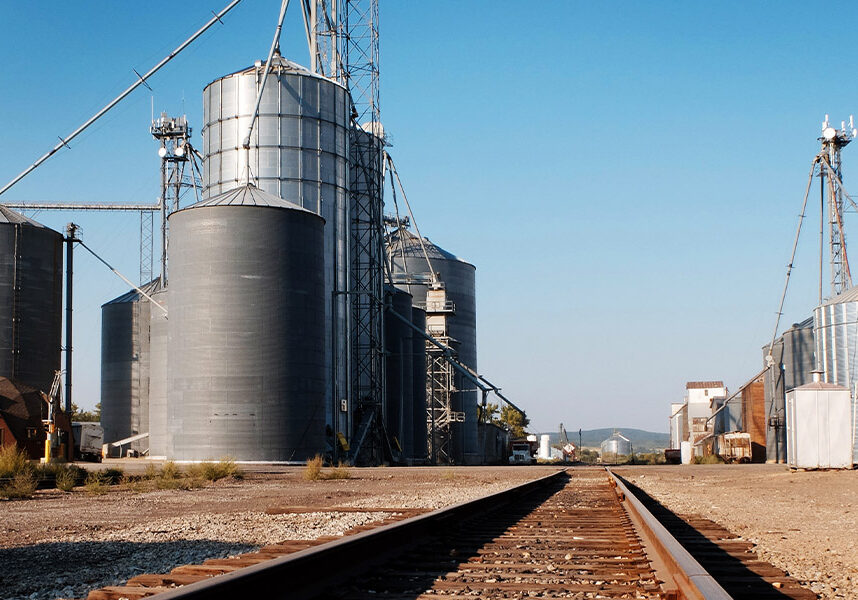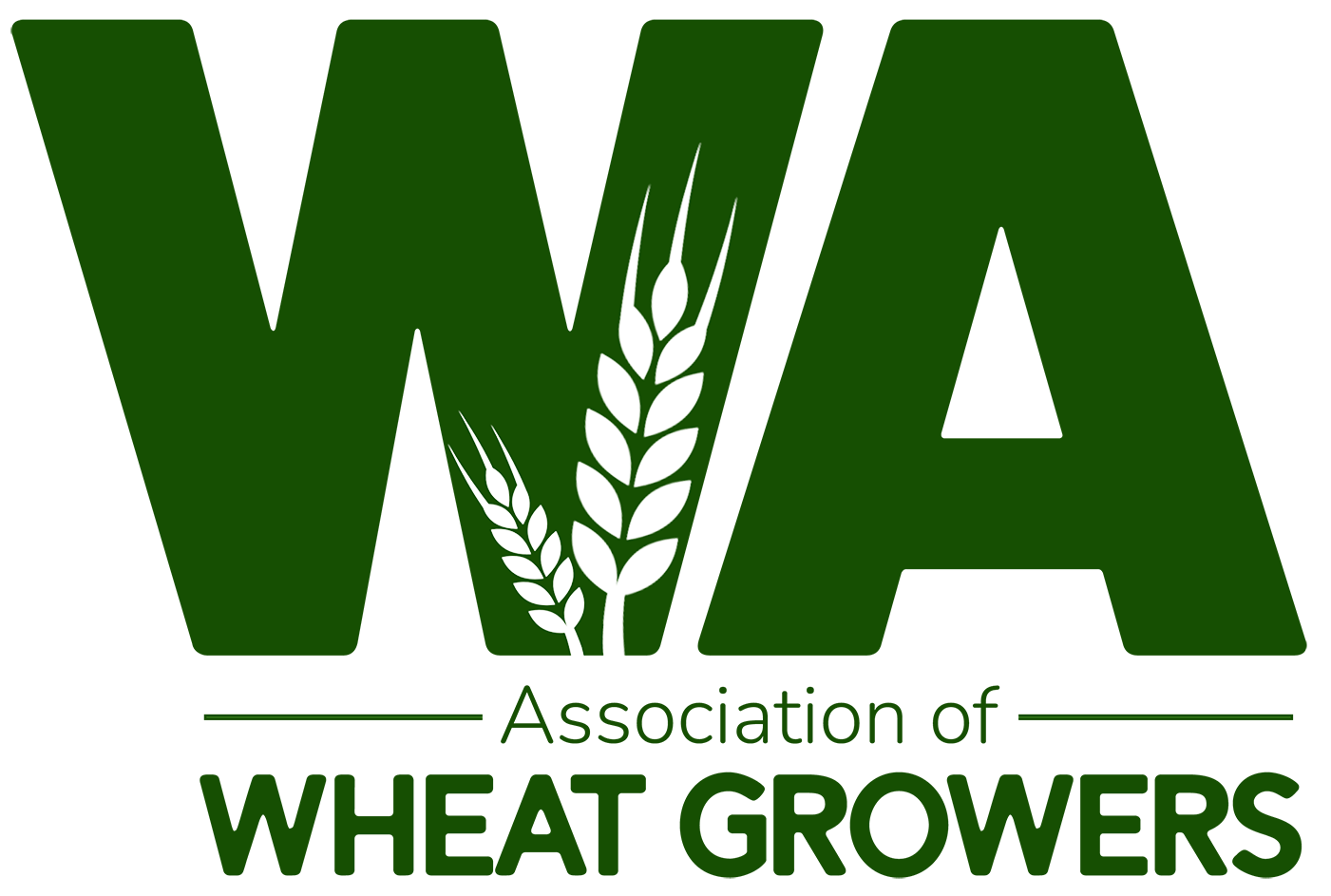
In recent months, the Class 1 railroads have come under scrutiny for inconsistent and unreliable rail service particularly from agricultural shippers in the Midwest. In letters and federal hearings, rail customers have detailed labor and locomotive shortages, off-the-rail prices for cars, and one-sided financial penalties for loading and unloading delays.
Pacific Northwest (PNW) shippers are feeling the effects of the service issues plaguing both Union Pacific (UP) and BNSF, the two major Class 1 railroads that service the region. Paul Katovich, CEO of HighLine Grain Growers, said that any time a rail system slows down (or speeds up), it can be troublesome across the entire network because service becomes unpredictable.
“If they (UP or BNSF) have a manpower problem, they have a manpower problem more or less everywhere. If they have an engine problem, they more or less have that problem everywhere,” Katovich said. “In a perfect world, we’d just run consistently all the time, and everybody can gear up for that. We understand, though, that we’re playing an outdoor sport, and with it comes variability.”
STB hearings
The complaints concerning the Class 1 railroads’ performance garnered enough attention that the Surface Transportation Board (STB), which is the federal agency that has jurisdiction over railroad rates, practices and service issues, scheduled two days of hearings at the end of April. Earlier that month, the National Association of Wheat Growers joined with other agricultural commodity groups in a letter to the STB urging the agency to take measures to prevent service disruptions. That letter can be seen at wawg.org/rail-letter-details-ag-issues/.
At the STB hearing, representatives from the National Grain and Feed Association (NGFA), the American Farm Bureau Federation (AFBF), The Fertilizer Institute and Cargill, among others, talked about double trip times, excessive dwell times at origin, delayed arrivals, crowded lines and uncertain schedules.
“NGFA members reported paying in excess of $500,000 in additional charges per substitute shuttle in the secondary market,” said Michael Seyfert, president and CEO of the NGFA. “Many NGFA members have a daily risk of slowing or shutting down operations due to reduced and inconsistent rail service. Some individual NGFA member companies report losses and increased costs in the tens of millions of dollars and lost or reduced operating days totaling weeks. Based on reports from members, we conservatively estimate the combined costs to the grain industry for lost revenues and additional freight expenses in the first quarter of 2022 were over $100 million.”
The Class 1 railroads are an important part of The McGregor Company’s transportation network. Throughout the year, but especially during the spring and fall planting seasons, the company, based in Colfax, Wash., relies heavily on the railroads for shipments of fertilizer ingredients. Any delay in those shipments could mean delays in crop input applications, potentially resulting in lost yields to producers.
“The issues brought up at the recent STB hearings are very real and long overdue for attention,” said Alex McGregor, chairman of The McGregor Company. “Just last month, we had time-sensitive rail car deliveries delayed by over 15 days, resulting in over 10 percent of the product being unusable for fertilizer production. We understand that the rail network is a complicated system. We need to see better service and greater reliability from our Class 1 railroads.”
Also testifying at the hearing were railroad employees, union representatives and other industry stakeholders. Representatives of several Class 1 railroads closed out the hearings. Both BNSF and UP acknowledged the issues and said they were addressing them by hiring more employees, increasing crew and locomotive availability, and reducing operating inventory.
Labor shortages
 Most of those testifying pointed to staffing shortages caused by COVID-19 and the furloughing of employees during the pandemic as one of the main contributing factors to the railroads’ performance issues. Brock Lautenschlager, Cargill’s North America rail leader, told the STB that based on employee data reported by the railroads, the current Class 1 transportation train and engine employee count is 6,400 employees below December 2019 levels, approximately a 12 percent decrease.
Most of those testifying pointed to staffing shortages caused by COVID-19 and the furloughing of employees during the pandemic as one of the main contributing factors to the railroads’ performance issues. Brock Lautenschlager, Cargill’s North America rail leader, told the STB that based on employee data reported by the railroads, the current Class 1 transportation train and engine employee count is 6,400 employees below December 2019 levels, approximately a 12 percent decrease.
“We believe the largest contributing factor for the rail service decline is the railroads currently do not have a sufficient number of employees to, one, provide the surge capacity needed to recover from unplanned events in a timely manner and, two, meet increasing U.S. rail demand, which is projected to be at a three year high near or above 2019 pre-COVID levels,” Lautenschlager testified.
Rick Patterson, a railroad analyst with Loop Capital Markets, outlined how a crew capacity crunch often happens, adding that it generally takes about a year for a railroad to recover. Patterson explained that a decelerating Class 1 network acts like a magnet, sucking in critical resources, specifically crews and locomotives, that can trigger a service meltdown. The steps that generally lead to such a situation are:
- The railroad is running well but with too lean of a crew capacity.
- There is a triggering event, such as a polar vortex, a surge in volume or, as is the current case, a surge in attrition. The impacted region flips to magnet mode, sucking in crews as the network decelerates.
- The railroad deploys all available crews, and crew overtime is maximized. Furloughed employees are recalled, and crews from other districts are brought in temporarily.
- If all this fails, the railroad will run out of crew capacity at a critical location. Congestion radiates out, network speed plummets. This cycle repeats as slower speeds reduce crew capacity, which reduces speed, which reduces crew capacity, and so on.
- The railroad begins hiring, but training takes time. Headcount is actually higher than it was before the triggering event.
- Over-hiring finally raises crew supply to meet crew demand, and recovery begins.
- The railroad recovers. Over-hires are furloughed, putting the railroad where it was before the triggering event, running well but with little extra cushion.
The PNW is a terminus point for BNSF and UP, and, as a result, Katovich said critical performance issues tend to get exacerbated here. Matt Garland, vice president of transportation at BNSF, stated in his testimony that the company is recalling all furloughed crew in the PNW and offering incentives for employees to transfer to the region.
One-sided financial penalties
Another point of contention that came up multiple times during the STB hearings was the idea of demurrage. If a shipper is slow to load or unload cargo, they are charged a fee, called demurrage. The railroads aren’t required to pay demurrage to shippers when rail cars are late, and that one-sidedness stings, said Katovich.
“We (shippers) are held accountable monetarily to perform. If you drag your feet, you are going to pay demurrage, and that’s a normal calculation. Railroads don’t work that way. You pay if you screw up, but they don’t pay if they screw up. That’s the heartburn people have,” he said.
Jewel Bronaugh, U.S. Department of Agriculture’s deputy secretary of agriculture, told the STB board that it should use all its authority to incentivize the railroads to provide better service.
“We cannot continue a system where the railroads face no consequences for providing unpredictable service, and shippers and, ultimately, farmers, ranchers and the American public, pay for it when it goes wrong,” she said.
(Trying to) right the rails
A week after the hearing, the STB announced that it will require certain railroads, including BNSF and UP, to submit service recovery plans, as well as provide additional data and regular progress reports on rail service, operations and employment.
“While the railroads have faced certain challenges over the last few years, the evidence produced at last week’s hearing is overwhelming that the railroads’ longstanding practice of reducing operating ratios by cutting employment levels, mothballing locomotives, and eliminating other essential resources are the central reasons why farmers have been hours away from depopulating herds, manufacturing facilities have reduced operating hours, and shippers cannot get their products to market on time or receive essential raw materials for their companies,” said STB Chairman Martin Oberman in a press release.
The rail hearings can be viewed on the STB’s YouTube channel.
Sidebar: Class 1 rail issues highlight importance of lower Snake River dams, barging
While shippers in the Pacific Northwest are dealing many of the same issues plaguing Midwest shippers, having an alternative transportation method — barging — has mitigated some of the effects of the railroads’ performance issues and helped keep shipping costs more competitive. Unfortunately, the challenges to the lower Snake River dams threaten those advantages.
“Supporters of breaching the lower Snake River dams often point to the railroads as being able to replace the shipping capacity that barging currently supplies,” said Michelle Hennings, executive director of the Washington Association of Wheat Growers. “But as we’ve seen recently, the Class 1 railroads seem to be giving preference to higher-paying cargos, such as coal, and leaving agricultural shippers to scramble for rail cars, locomotives and track time. Without barge competition, railroads would be free to raise shipping rates, and the increased traffic would mean more delays and less rail car availability for growers.”
One four-barge tow can move 490,000 bushels of wheat. It would take approximately 140 rail cars to move the same amount, and that doesn’t take into account all of the other commodities that are barged up and down the river system, such as corn, wood products, fertilizer components and fuel. All of that shipping capacity would have to be absorbed by the already-stressed rails and roads, adding wear and tear to existing infrastructure, not to mention a higher carbon footprint.
“Nothing can replace the timeliness of barge deliveries for bringing crop nutrients upriver for farm customers or ag commodities heading downriver to international buyers,” said Alex McGregor, chairman of The McGregor Company. “Class 1 railroads can’t handle the load they have today, much less anything more.”
In a May letter sent to Sen. Patty Murray (D-Wash.) and Washington Gov. Jay Inslee regarding their joint effort to study the feasibility of replacing the benefits provided by the lower Snake River dams, McGregor pointed out that timely deliveries by rail have long been a challenge; he reminded Murray that they had discussed the topic in 2007.
Paul Katovich, CEO of HighLine Grain Growers, agreed that having both barging and railroads to move product is critical to the success of the region’s producers and their overseas customers.
“Rail and barge shipments work together like legs of an athlete to move a massive amount of product efficiently. When you take one leg away, the athlete can’t perform. The rail slowdown we’re experiencing is a perfect example of how important balance is to our world. If we didn’t have an offsetting left leg to kick when the right leg is hurt, it’s an exponentially bigger problem for our entire ecosystem. The value of that balance to the competitiveness in the global marketplace is obvious to the people living it every day,” he said.
















